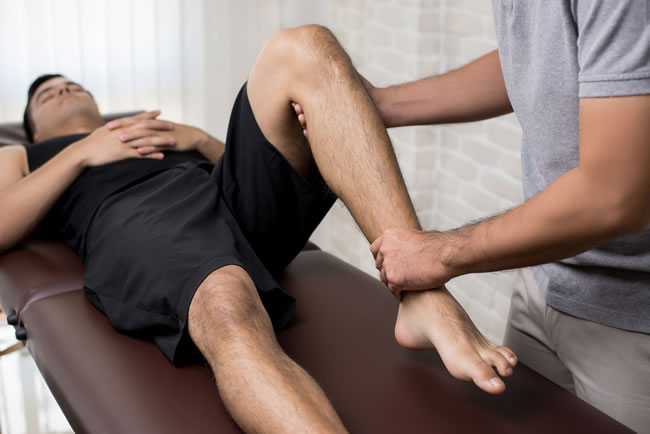Just about everyone has had some experience of low back pain. It may have been a sudden, short-lasting (acute) attack of pain caused by some arbitrary movement or action you have done a million times before. Or you might have had low back pain that has lasted longer than expected or keeps recurring.
Both of these can be alarming. It can be very painful and cause much misery and disruption to day-to-day life, work or activities. Low back pain can occur with pain on one side or both sides, it can include severe stiffness and restriction to movement. The pain can be accompanied by pins and needles, numbness, or dull aching that is felt down your leg (known as referred pain) and is called sciatica or lumbar radiculopathy. It is important to remember that back pain is common, but serious or permanent damage is rare. You should not be fearful of damaging your spine, remember your back was built to bend, flex and lift.
How you deal with your back pain is often more important than an exact diagnosis or specific treatment. It is often difficult to find the exact cause of low back pain as the spine is made up of many components. X-rays and scans can be inconclusive. Pain itself can be very complex, involving body tissues, your mental and emotional state as well as your work and home environment. Understanding how your thoughts, beliefs, past events and social settings can impact your pain experience, and vice versa, will go a long way to helping you cope with back pain. Likewise having a therapist explain the many overlapping and interconnecting anatomical parts will help you understand how your back moves.
Your body was made to move; it likes to move as this improves circulation, muscle length and strength and your sense of wellbeing. The opposite of which tends to happen if you remain still and stiff. Bed rest for more than a day or two is now considered the least helpful treatment for the body and mind. Back pain and a sense of disability (to whatever extent that may be for you) can lead to inactivity, depression, anxiety, lethargy and muscle wasting (loss) from disuse. This can develop into a vicious cycle of negative emotions and behaviours fuelling the experience of pain and a belief of inability to live!
When you are in pain you may move differently to try to ease the pain. As time goes on this can become an unhelpful habit. Often you may find yourself tensing in anticipation of pain during daily tasks, or avoiding certain movements for fear of pain or causing more harm. It is important to begin to realise how and why you move the way you do. Try to move freely and as normally as possible. Through gentle exercises, normal, relaxed movement of the spine can be encouraged. Initially, exercise might make your back feel a bit sore, but it will not cause any harm or further damage. Over time, your back will get stronger and more flexible and this should reduce pain. You will then begin to feel more confident and gain self-belief. A physical therapist can guide you through this process and advise on what the best exercises and activities for you are.
Performing an exercise or movement you enjoy, either alone or with a group class or friends, will help motivate you to continue. What matters most is that you move, irrespective of the type of movement. You don’t have to be afraid to take pain medication, as long as you don’t become dependent on it long-term and you have checked with your GP or pharmacist for advice. Simply applying heat or ice can help relieve pain and associated muscular tightness or spasms. Having regular massages can also ease pain and discomfort and facilitate relaxation and reduce stress.
Mood, stress, repetitive movements and sustained postures (sitting, standing, driving) throughout your everyday life can aggravate your back pain. Simple, small changes can make a big difference. Regular breaks, postural advice, lifting techniques and relaxation methods (including meditation, mindfulness, deep breathing, yoga) may help too.
Management can include education, hands-on manual therapy, massage therapy, manipulation and mobilisation. Exercise therapy can be anything you like and enjoy! One-on-one sessions with a physical therapist or group exercise therapy specific to you can be beneficial. Being active is the key to managing, independently, your back pain. So, take control of your back pain, take the first steps to self-care and get your independence back.
The information contained in this article is intended as general guidance and information only and should not be relied upon as a basis for planning individual medical care or as a substitute for specialist medical advice in each individual case. ©Co-Kinetic 2023
Start your journey to a healthier, stronger body today!
RESTORATION
Once we have got you to a stage where you injury is healed, we then give you a rehabilitation programme to restore your strength and enable you to resume your sporting activities.
prevention
Are you currently engaging in sport but worried about getting injured in the future? Why not work with us so we can help get your body strong and supple to minimize any disruption to your exercise routine?




